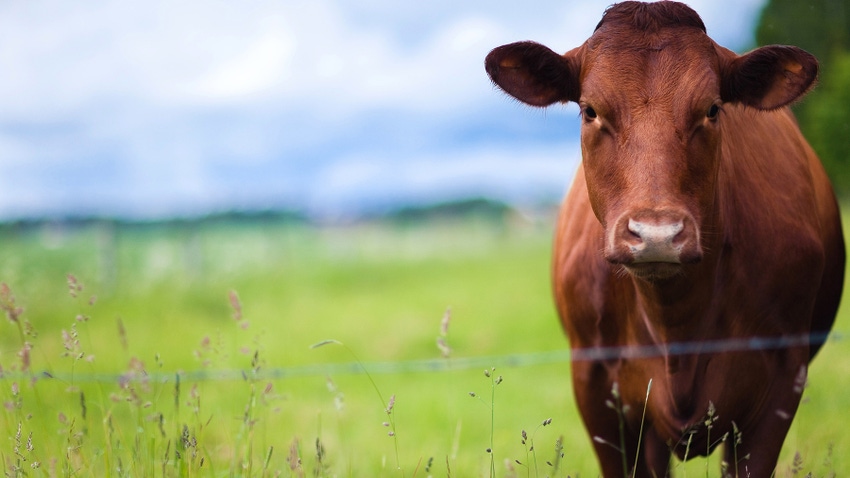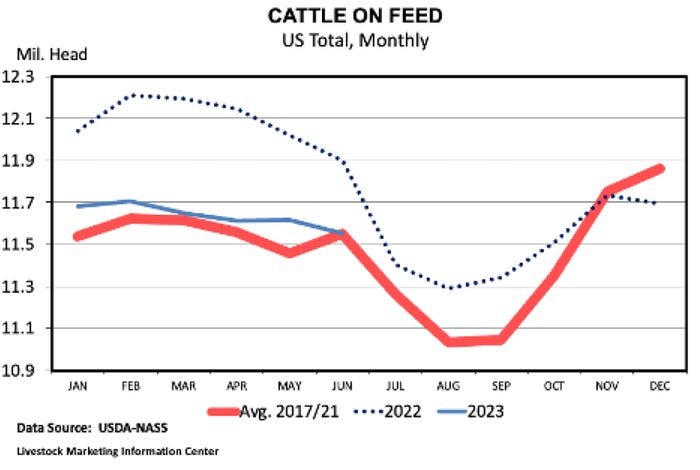July 14, 2023

The latest Cattle on Feed report was released on Friday by USDA-NASS. June 1 total cattle on feed for feedlots with capacity of 1,000 or more head was estimated at 11.55 million head which was 2.9% below June 1, 2022.
This marked the ninth consecutive month that total cattle on feed was lower than the same month of the previous year.
The biggest surprise from this report was the larger than expected placements of cattle into feedlots during May which were estimated at 1.96 million head.
Placements
Placements were 4.6% (86,000 head) above May 2022 totals which was above the pre-report average expectation of a 1.7% increase. This was the largest May placements total since 2020.
Placements were higher across all weight classes except for the 900-999 pound group which was down 2.3%.
Placements of cattle weighing less than 600 pounds were up 4.1%, 600-699 pounds up 9.3%, 700-799 pounds up 3.2%, 800-899 pounds up 6.5%, and over 1,000 pounds up 6.7%.
Looking at regional placements, most of the overall increase was driven by Nebraska where placements were 13.9% higher than last May, and placements were up double digits in all weight categories. Drought almost certainly was a factor in the larger Nebraska placements.
Placements in Texas were interesting because of the contrast between light and heavy weight placements. Texas placements of under 600 pound cattle were up 7.1% (10,000 head) while placements over 800 pounds were down 8.7% (10,000 head) as compared to May 2022.
Marketing
Cattle marketings were reported at 1.95 million head which is 1.8% above a year ago. This was slightly higher than expected pre-report but within the range of expectations.
Looking ahead, it will be interesting to watch where cattle on feed numbers go during the summer months.
Cattle on feed numbers typically decline in the summer and reach their seasonal low point around August before beginning to expand again for the Fall.
Just how low that low-point is this year, and the percentage of heifers, will be informative for discussions on cattle and beef supplies.

Source: Southern Ag Today
Read more about:
CattleAbout the Author(s)
You May Also Like




